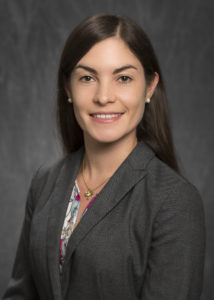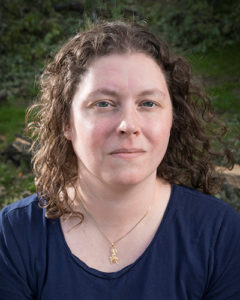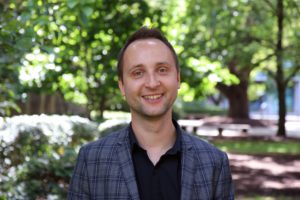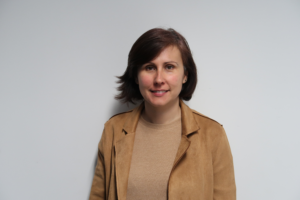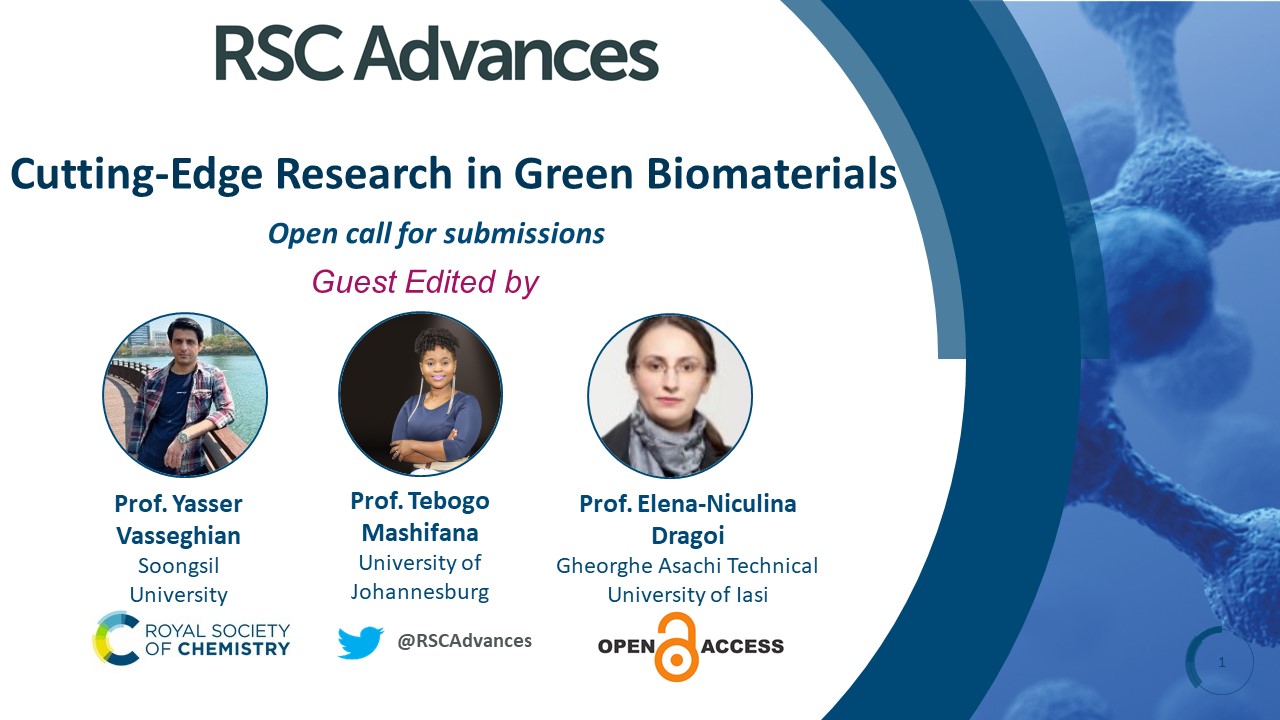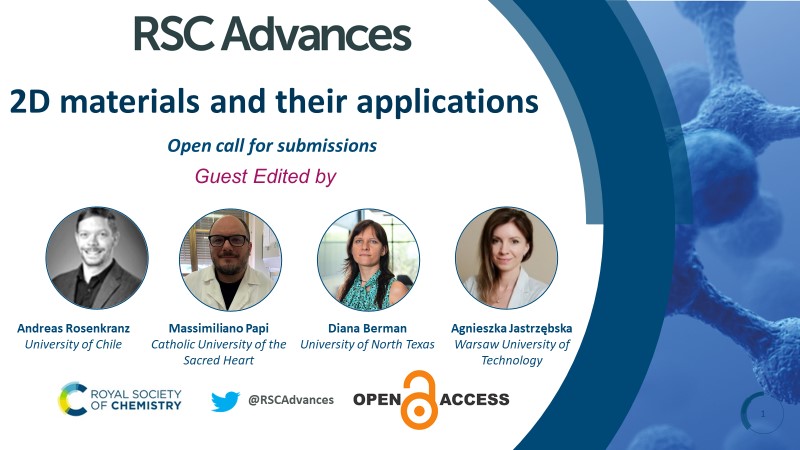Welcome to our Emerging Investigators Series 2022! This series, led by Prof Shirley Nakagaki (Federal University of Paraná, Brazil) and Dr Fabienne Dumoulin (Acıbadem Mehmet Ali Aydınlar Universit, Türkiye), highlights the very best work from early-career researchers in all areas of chemistry. 10 papers were published as part of the collection spanning the breadth of chemistry on topics ranging from green and environmental chemistry, to biological and bioinorganic chemistry, as well as papers that propose theoretical calculations as solutions to chemistry problems. You can read all about the contributions in this accompanying Editorial prepared by Shirley.
We would like to take this opportunity to highlight an author from the series, Prof Dr Noémie Elgrishi. We interviewed Noémie to find out more about her area of research and her contribution to the series.
Impact of the choice of buffer on the electrochemical reduction of Cr(vi) in water on carbon electrodes
Callie M. Stern, Devin D. Meche and Noémie Elgrishi
RSC Adv., 2022,12, 32592-32599
Noémie Elgrishi is an assistant professor at Louisiana State University. A native of France, Noémie worked in the labs of Jonathan Nitschke (University of Cambridge) and Daniel Nocera (MIT, now Harvard University) during her Master’s degree (Sorbonne University, formerly University Pierre and Marie Curie – Paris 6). After obtaining a PhD from Sorbonne University working with Marc Fontecave (Collège de France), during which she was named a 2012 Scifinder Future Leader, she was a Postdoctoral Researcher under the mentorship of Jillian Dempsey (UNC-Chapel Hill) for 2 years. Since starting at LSU in 2017, Noémie’s group has developed a fundamental-science-first approach to interrogate environmentally relevant problems. Research centers on the intersection of electrochemistry and supramolecular chemistry to answer key questions related to water and energy challenges. Noémie Elgrishi received a CAREER award from the National Science Foundation in 2021 and will be an editorial broad member for the Journal of Coordination Chemistry starting in 2023.
Could you briefly explain the focus of your article to the non-specialist (in one or two sentences only) and why it is of current interest?
Electrochemical methods are well-suited to reduce toxic hexavalent chromium to purify drinking water, but the challenge is mitigating the energetic cost associated with the transfer of the large number of protons and electrons required all while using cheap carbon electrodes. Here we show how the choice of buffer, not simply the pH, influences the reaction and we also demonstrate a very simple way to recycle electrodes if they get fouled during use.
How big an impact could your results potentially have?
The work helps establish that in the conditions studied: 1) cheap carbon electrodes can be used instead of noble metals, 2) Cr(VI) reduction is gated by a similar proton-coupled electron transfer step in multiple buffers, 3) some buffers promote adsorption of the resulting Cr(III) on the electrode, and 4) it is possible to restore the electrode surface and regain activity with a simple rinse, without the need for re-polishing. Combined, these open the way to the development of water purification flow systems to reduce Cr(VI) in water.
Could you explain the motivation behind this study?
The motivation is to advance electrochemical water purification, specifically targeting toxic hexavalent chromium, by leveraging knowledge from the community working on Proton-Coupled Electron Transfers. At its core, the challenge of Cr(VI) reduction is the efficient transfer of multiple protons and electrons. This is thermodynamically easy but kinetically challenging. Before developing catalysts to mediate the transformation, it was important to identify the parameters influencing direct electroreduction of Cr(VI) at an electrode.
In your opinion, what are the key design considerations for your study?
Realizing that buffers are not inert innocent spectators! We are so used to thinking of buffers in water as a means to work at a fixed pH, without really considering the effect of the specific acid/bases added.
Which part of the work towards this paper proved to be most challenging?
Experimentally, the observation of Cr(III) plating on the electrode in certain conditions significantly increased the time required for data collection as freshly polished electrodes were required for every single scan. Scientifically, realizing that the buffer was the cause of these changes in behavior was the most challenging.
What aspect of your work are you most excited about at the moment?
I am excited about our progress on developing electrocatalysts to further mediate the Cr(VI) reduction transformation, as well as applying lessons learned to other problematic oxyanions contaminating water supplies.
How has your research evolved from your first article to this particular article?
Our fist paper on this project demonstrated that carbon electrodes are effective for the reduction of Cr(VI) in water across a wide range of pH. We were using a citrate buffer for that work as we were covering a large pH range. In this new paper we explore how that seemingly innocuous choice of buffer actually impacts many steps of the Cr(VI) reduction process.
What is the next step? What work is planned?
We would like to develop electrocatalysts to speed up the reaction and, critically, decrease the energy required (lowering the overpotential). We have made progress in that direction and hope to be able to share more soon.
Why did you want to publish in RSC Advances?
I value the RSC as a non-profit scientific society. I also love the ease of submitting papers to the RSC when using the template, with auto-populating fields which speeds up the submission process. I chose RSC Advances specifically as it is a general journal with a broad audience.
What are your thoughts on open access publishing?
It is fantastic to hear that the RSC, and others, are moving to open access. I just hope funding follows, since the current model is to let the researcher somehow cover the costs. This could create a model where only the top funded groups are even able to consider publishing in the top journals (given the large cost), and where decisions on which journal to consider to submit a paper are based on the cost first instead, of journal audience or fit.

Submit to RSC Advances today! Check out our author guidelines for information on our article types or find out more about the advantages of publishing in a Royal Society of Chemistry journal.
Keep up to date with our latest Popular Advances articles, Reviews, Collections & more by following us on Twitter. You can also keep informed by signing up to our E-Alerts.


